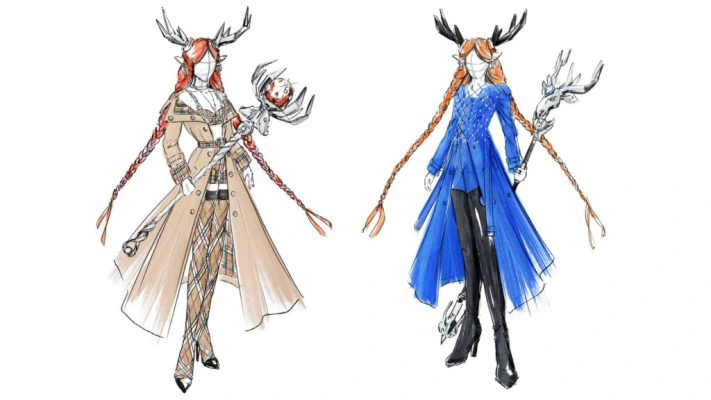Decoding the Metaverse has become a favourite sport for brands today. Metaverse being called out as the convergence of two worlds; the digital world and the real world is the unified approach towards creating an environment where the benefits of both these worlds collide. One common term heard, used, and conversed by everyone today is that of ‘digital assets’. NFT is the hottest buzzword in town today with various people investing in various digital products. As industries across the world are contemplating this strategy, the idea of cryptocurrency and ownership in the digital world will become the factor around which the existence of brands will revolve in the Metaverse. This will allow brands to expand their revenue sources and also build a strong presence in the virtual bubble that will validate their existence in similarity to the physical world.

When it comes to the Metaverse, brands can scale the business by adopting a ‘community strategy’ that speaks volumes of how important it is to strengthen relationships and take everyone along in this immersive experience. Creating a personal ‘brand environment’ and inviting people to interact in this digital world will prove to be a meaningful strategy for brands. Some key aspects to be well versed to get along with Metaverse are:
Consider adopting extended reality(XR)
XR; a term that wraps Augmented reality, Virtual reality, and Mixed reality is a popular consideration today, more so after the concept of Metaverse found acceptance to soar. With technology simulating the growth of computer graphics for over a couple of years now, the extension of it is helping map the actual surroundings together with the virtual landscapes to display the magic of the Metaverse to everyone. This technology is the key for brands and their customers to unlock the door of the ‘Metaverse’ and be able to engage in various activities in that community with the help of 3D avatars. Fortnite and Roblox are two popular names in the Metaverse domain making use of this technology.
Invest in Virtual Avatars
A Virtual Avatar is the backbone of this newly found universe. Virtual avatars are the representation of humans in the Metaverse and is a concept that was implemented a long time back and used by gamers to bring a sense of existence in another world. With hyper-realistic full-body avatars available nowadays, blurring the lines between the digital and the physical world has become a piece of cake. Virtual avatars give people an entry pass into the Metaverse. Virtual avatars powered by AI provide the aspect of physical movement and intelligence that humans pertain to in the real world. Then may it be a game to be played, a meeting to be attended, or a shopping experience in a mall, these 3D avatars dress and prepare you for the occasion and lay the ‘new world’ at your feet. In relevance to the Metaverse, virtual avatars play the role of T in Tea without which the Metaverse holds no meaning.
Approach CX through the lens of technology
As the Metaverse is a new term for all, it is still open to different considerations, and experimenting with methodologies can help brands stand out from the crowd. Engaging the audiences digitally holds a lot of potential for brands in accordance with the Metaverse. Deploying AI-based strategies, developing the virtual version of a product, generating a channel integration scheme, or even creating a virtual environment for a different ambience and an experience for people in the digital world would do the trick. Thinking ‘tech’ while formulating a plan for the customer experience will open a door of opportunity for brands to make way through the Metaverse.
A peek into the strategies favoured by different brands-
Coca Cola
Last year Coca Cola launched an NFT in an auction for Friendship Day. The winner was awarded a box containing NFT’s, a custom-made jacket developed for a 3D portal known as Decentraland, a Coca Cola card covered with artwork, and a sound visualizer. Talk about delighting the customers with never experienced before surprises. This strategy by Coca Cola created a lot of buzz in the market and was loved by all.

Nike
Nike has taken everything they have to offer in the physical space online and for that, they have created a universe known as ‘Nikeland’. This world has Nike showrooms to display products in the virtual world where customers can deck their own avatars with various Nike collections available. This world invites people to engage in various games with friends by incorporating real-world movements into the virtual ecosystem.

Burberry
Burberry has invested in gaming as a strategy. This brand can be seen designing outfits for the characters of a game known as Honor of Kings.

It is important for brands to never leave hands held with technology to make a mark in this newly found world. Eliminating device restrictions, drawing up a landscape that expands the physical space of people, there are a lot of things that brands can do to make this market profitable for themselves and exciting for the customers. Geolocation is another such strategy that can be utilized to make maximum use of the facilities available. Experimenting with virtual showrooms, games, events, exhibitions, etc, and finding a niche that suits your brand is the right way to go.
In ‘The Matrix’ as Morpheus asks Neo, “Have you ever had a dream, Neo, that you were so sure was real? What if you were unable to wake from that dream, how would you know the difference between the dream world and the real world?”, Metaverse is here to blend the dream world and the real world to bring in a similar perception of the world for all.



